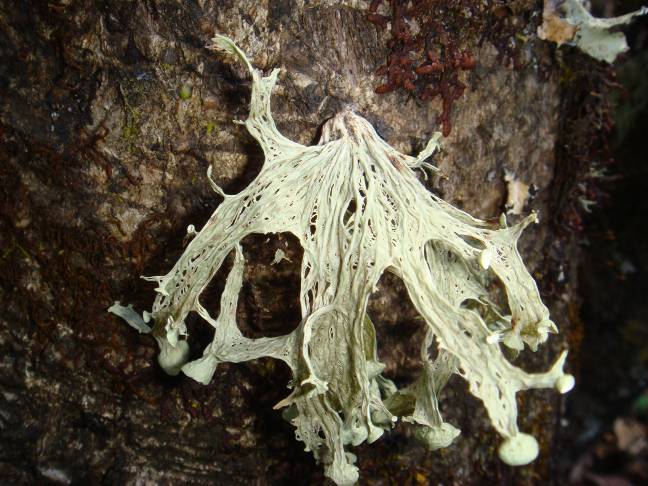Epiphytes comprise a substantial portion of total species richness in subtropical forests in Yunnan, SW China, however, information on lichen species diversity and distribution, particularly their response to environmental change, is still lacking.
Prof. Liu Wenyao and his team of Xishuangbanna Tropical Botanical Garden (XTBG) have focused on studies of epiphytic lichens in Xujiaba region (2000–2750 m a.s.l.; 23°35′–24°44′N, 100°54′–101°30′E), a core area of the Ailao National Nature Reserve, for many years. They conducted a study seeking to combine indicator species analysis (ISA), canonical correspondence analysis (CCA), and functional trait analysis to characterize the epiphytic lichen response to successional habitat conditions. Their main objective was to estimate the effectiveness of epiphytic lichens for environmental assessment in subtropical forests. They addressed two questions: (1) how do bole lichens respond to forest characteristic changes associated with succession and (2) which lichen species/functional group is the most responsive indicator associated with habitat variables?
They investigated epiphytic lichens in 120 plots in two primary and six secondary forests in the subtropical Ailao Mountains. They found that the cover, richness, diversity, community structure of bole lichens differed greatly among forest types and responded significantly to habitat variables. The narrowly lobed foliose group was the best environmental indicator in subtropical forests.
The researchers recommend that the combined use of lichen species diversity, indicator species and functional group may be the best way to obtain detailed information, which is crucial for large-scale and long-term forest monitoring and biodiversity conservation.
The study entitled “Bole epiphytic lichens as potential indicators of environmental change in subtropical forest ecosystems in southwest China” has been published online in Ecological Indicators, 29 (2013): 93-104.


Ramalia sinensis Sticta fuliginosa


Sticta fuliginosa narrowly lobed foliose lichens
(Images by LI Su)




